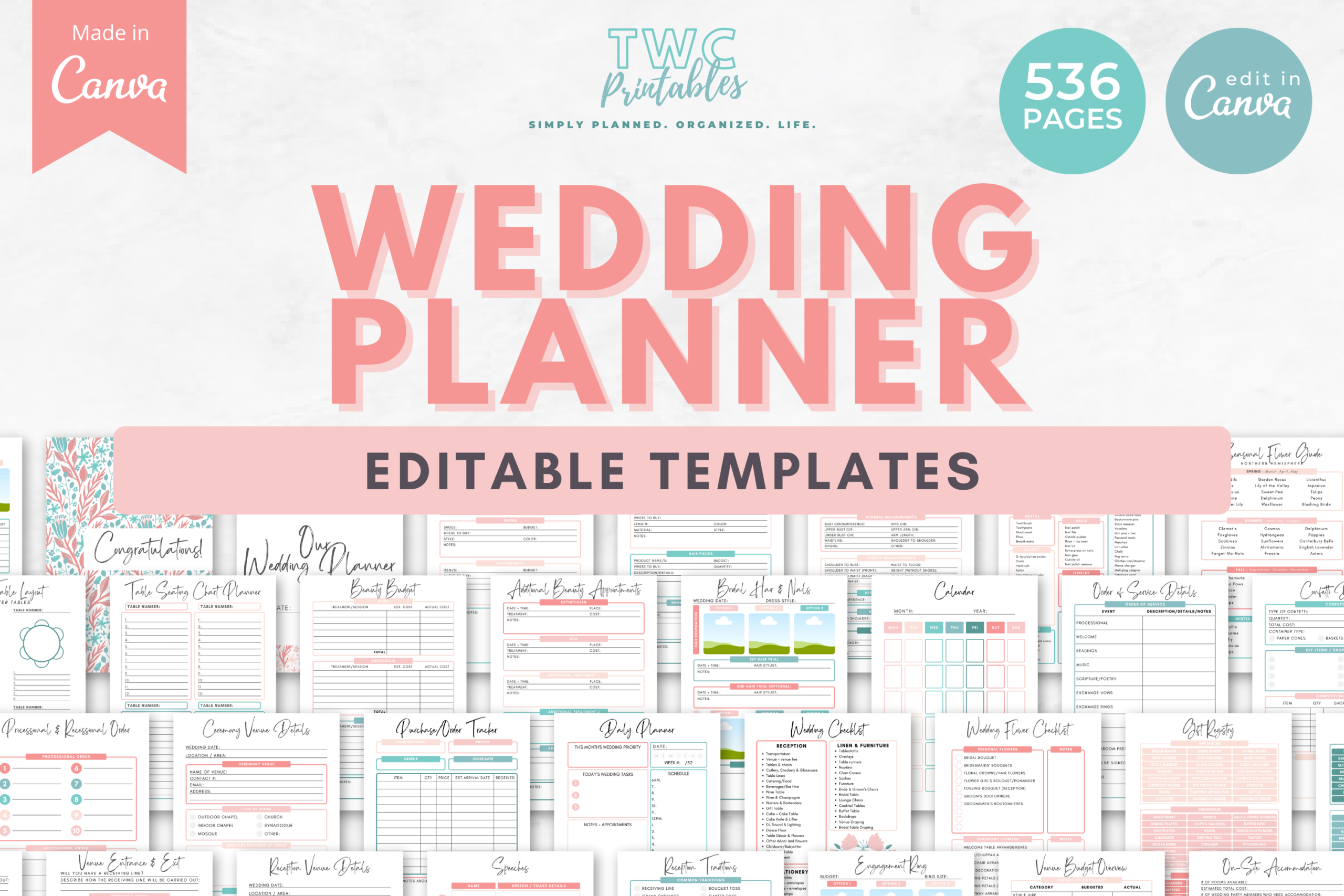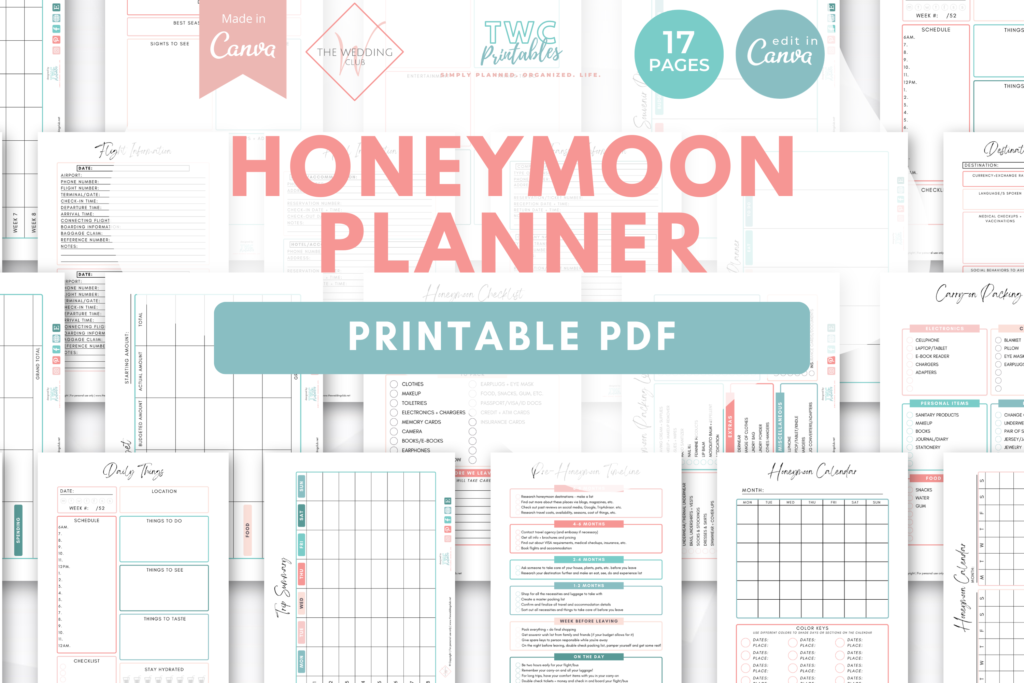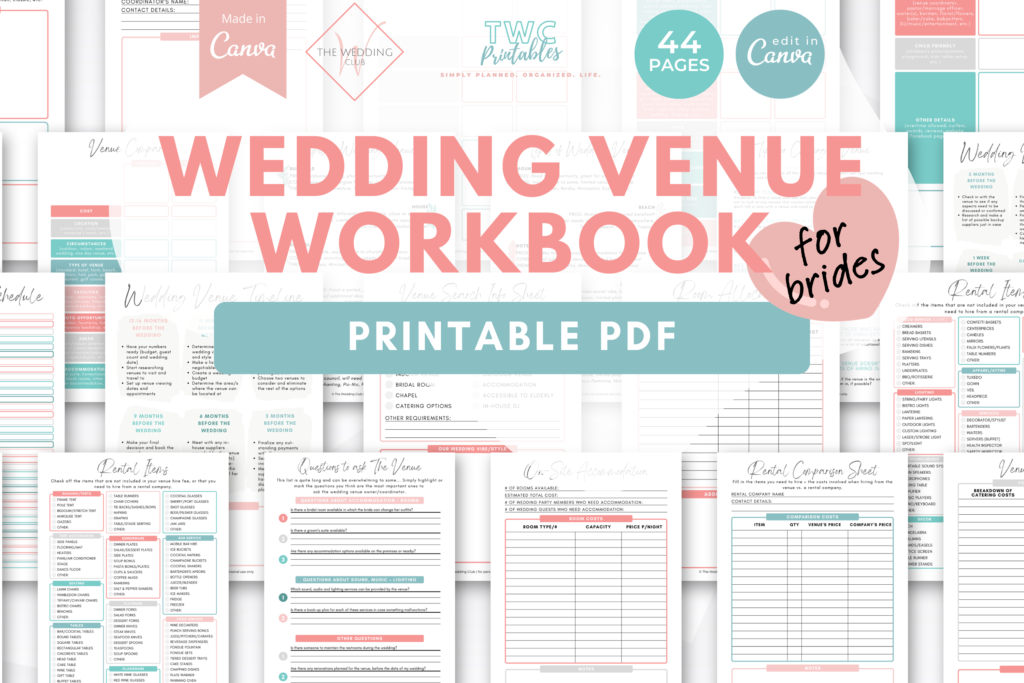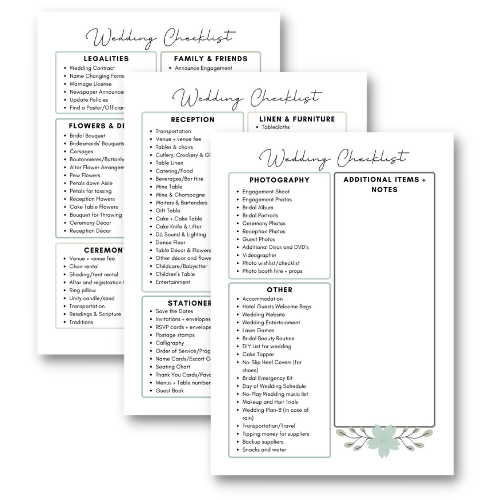Imagine yourself standing on the precipice of love, gazing out into a future adorned with wedding bells and promises of eternal devotion. You’ve meticulously planned every detail, from the enchanting venue to the exquisite flowers, and even that mouthwatering cake that’s almost too beautiful to cut into.
The guest list is finalized, and the invitations have been sent, each one radiating with the promise of a day that will be etched in the memories of you and your beloved forever. You can almost hear the gentle strains of your chosen love song playing softly in the background as you prepare to say “I do.”
But hold onto your bouquet because here’s the twist – weddings, it turns out, are like grand, beautiful icebergs.
What you see on the surface, that majestic ceremony and the sparkling attire, represents only the tip of the budgetary iceberg. Beneath the pristine white gown and the glittering rings lies a labyrinth of expenses, some lurking in the shadows, others waiting patiently to surprise you with their presence.
Fear not, for in this blog post, we’re about to embark on an exciting journey together, one that will unravel the mysteries of wedding expenses, financial planning, and budget management.
We’re going to peel back the layers, like unwrapping a beautifully wrapped gift, and reveal 15 often-overlooked wedding expenses that have a sneaky way of popping up when you least expect them.
Unlock the Hidden Costs: 15 Wedding Expenses You Didn't Budget For

1. Bridesmaid proposal boxes
Amidst the whirlwind of wedding planning, there’s one beautiful tradition that’s gained immense popularity in recent years: bridesmaid proposal boxes. These thoughtful and personal gestures allow brides to ask their closest friends and family to be part of their bridal party in a memorable way.
However, what often goes unnoticed is that these charming boxes can pack a not-so-charming punch to your wedding budget.
The Allure of Bridesmaid Proposal Boxes
Before we dive into the financial aspect, let’s appreciate the appeal of these creative boxes. They are, in essence, miniature treasure chests filled with carefully selected items.
From personalized trinkets to heartfelt notes, these boxes are an endearing way to express your gratitude and share your excitement with your bridesmaids.
Typically, a bridesmaid proposal box might include items like monogrammed robes, custom-made jewelry, scented candles, and perhaps even a bottle of bubbly. It’s a charming way to show your appreciation for the friends and family who will stand by your side as you say “I do.”
The Hidden Costs
What often catches brides off guard are the cumulative expenses associated with these proposal boxes. Each box, while lovely, requires careful consideration and budgeting.
Here’s where the costs can quickly add up:
Customization: Personalization is key when it comes to proposal boxes. Engraved items, custom-made jewelry, and monogrammed robes all come at a premium. Factor in these costs per box.
Shipping: If your bridesmaids are spread out geographically, shipping these boxes can become a significant expense. Shipping fees can vary depending on the size and weight of the box.
Contents: While individually, the contents of each box might seem affordable, remember that these costs multiply by the number of bridesmaids you have. That bottle of champagne and the scented candle might not break the bank on their own, but when you’re buying multiples, they can add up.
Packaging: The presentation of the box matters, and the packaging materials, such as high-quality boxes, tissue paper, and ribbons, contribute to the overall cost.
Budgeting for Bridesmaid Proposal Boxes
To avoid the surprise of these additional expenses, it’s crucial to budget for bridesmaid proposal boxes from the outset. Here’s how:
Set a per-box budget: Determine how much you’re willing to spend on each proposal box and stick to it. This will help you make conscious choices about the contents.
Prioritize: Decide what elements are non-negotiable in the box and where you can cut costs. Maybe a heartfelt letter is more important than an expensive piece of jewelry.
Consider DIY: If you’re crafty, you can save significantly by creating the boxes yourself. Many brides find immense satisfaction in adding a personal touch to each one.
Also Read: 29 Gorgeous Bridesmaid Proposal Boxes
2. Hotel rooms
When it comes to wedding planning, the big-ticket items often steal the spotlight – the venue, catering, and attire, for example. However, there’s one expense that’s notorious for sneaking up on couples and catching them off guard: hotel rooms.
The Hotel Room Conundrum
Hotel rooms might not be the first thing that comes to mind when you’re envisioning your dream wedding day, but they play a crucial role in ensuring that everything runs smoothly, especially if you’re hosting an out-of-town or destination wedding.
The hotel rooms we’re talking about aren’t just for the couple themselves; they’re for your guests, your bridal party, and often for you and your spouse as well. The cost of these rooms can quickly add up, and if you’re not prepared, they can throw your budget into disarray.
Why Hotel Room Costs Can Soar
Several factors contribute to the often underestimated expense of hotel rooms in a wedding budget:
Number of Guests: The size of your guest list directly impacts the number of rooms you’ll need to reserve. If you have a large guest list, the cost can be substantial.
Room Rates: Hotel room rates can vary widely depending on the location, season, and hotel quality. Rates can fluctuate significantly even within the same city.
Special Requests: If you have specific requests, like reserving a block of rooms or requesting upgrades for your bridal party, these can come with additional costs.
Duration of Stay: Some guests might need rooms for the entire weekend, while others might stay just for the night of the wedding. Longer stays mean higher costs.
Budgeting for Hotel Rooms
To prevent hotel room expenses from blindsiding you, here are some essential steps to include them in your wedding budget:
Estimate Costs Early: As soon as you’ve chosen your wedding venue and date, begin researching local hotels and get estimates for room rates. This will give you a ballpark figure to work with.
Negotiate: Don’t hesitate to negotiate with hotels for group rates or additional perks for booking a block of rooms. Many hotels are open to providing discounts for wedding parties.
Communicate with Guests: Let your guests know about your hotel choices and any group rates or deals you’ve secured. This transparency can help them plan and budget for their stay as well.
Set a Room Budget: Allocate a specific portion of your wedding budget to cover hotel expenses. Be sure to include both the rooms for your guests and any special accommodations for your bridal party.
3. Postage fees
In the whirlwind of wedding planning, the focus naturally gravitates towards the more visible aspects – the venue, the dress, the catering, and the flowers. However, tucked away in the shadows, there’s an often-overlooked expense that can sneak up on even the most organized couples: postage fees.
The Unsung Heroes of Wedding Invitations
Postage fees may not be the most glamorous aspect of wedding planning, but they play a crucial role in getting your carefully crafted wedding invitations into the hands of your guests.
From save-the-dates to RSVP cards, every piece of your wedding stationery requires postage. If you underestimate these costs, they can nibble away at your budget like a stealthy little mouse.
Why Postage Costs Can Escalate
Several factors contribute to the hidden expenses associated with postage for wedding invitations:
Invitation Weight: Fancy, textured paper and embellishments like ribbons or wax seals can significantly increase the weight of your invitations. Heavier mailpieces require higher postage rates.
Size of the Invitation: Oversized or irregularly shaped invitations might fall under non-standard postage categories, incurring extra costs.
RSVP Cards: Including prepaid RSVP cards can be convenient for your guests, but it also means additional postage expenses for you.
International Guests: If you have international guests on your list, be prepared for higher postage fees, as sending mail overseas is more expensive.
Mailing Method: Your choice of mailing method, such as standard mail, priority, or express, can affect postage costs.
Budgeting for Postage Fees
To avoid the shock of unexpected postage expenses in your wedding budget, follow these steps:
Calculate Early: As you design your invitations, take them to the post office for weighing and measuring. This will give you a precise idea of the postage cost per invitation.
Account for All Pieces: Don’t forget to include every piece of stationery in your calculations, from the save-the-dates and invitations to the thank-you cards.
Consider Digital Alternatives: If you’re on a tight budget, explore digital invitations for save-the-dates or even the wedding invitations themselves. This can save you a significant amount on postage.
Plan for International Guests: If you have guests from abroad, factor in the cost of international postage and consider sending digital invites or providing a wedding website link instead.
Allocate a Postage Budget: Set aside a dedicated portion of your wedding budget for postage expenses, and stick to it. This ensures that you won’t be caught off guard when it’s time to send out your invitations.
Pro Tip: To avoid dealing with postage fees entirely, opt for digital invitations. In today’s digital age, electronic invitations have become increasingly popular and convenient. They not only save you money on postage but also on printing costs. Plus, digital invitations allow for easy tracking of RSVPs and can be environmentally friendly. Just ensure that your guests are comfortable with digital invitations, and you’ll eliminate the need for postage fees altogether.
4. Sales tax
When couples embark on the thrilling journey of wedding planning, they often have a clear vision of their dream day, complete with exquisite details and memorable experiences. However, amidst all the excitement and anticipation, there’s a sneaky expense that frequently flies under the radar: sales tax.
The Often Overlooked Sales Tax
Sales tax is a silent budget buster that can catch even the most organized couples off guard. It’s an additional cost that gets tacked onto various wedding-related purchases, from your venue and catering to the rental items and decor.
While it may seem minor, the cumulative effect of sales tax on your wedding budget can be significant.
Why Sales Tax Adds Up
Several factors contribute to the stealthy nature of sales tax in wedding planning:
Varied Tax Rates: Sales tax rates vary from state to state, and sometimes even within different municipalities. This means that the same purchase may incur different tax rates depending on your location.
Multiple Expenses: Wedding budgets are made up of countless individual expenses, each subject to its own sales tax rate. These expenses can quickly accumulate, making it challenging to keep track of the total tax burden.
Large Purchases: Wedding-related purchases are often substantial, like venue rentals or catering contracts. The sales tax on these significant expenses can be substantial.
Last-Minute Additions: Sometimes, couples make last-minute additions or changes to their wedding plans, which can introduce unexpected sales tax costs.
Budgeting for Sales Tax
To ensure that sales tax doesn’t derail your wedding budget, consider these steps:
Research Tax Rates: Before you start planning, research the sales tax rates in your area and for your specific venue. Knowing these rates upfront will allow you to budget more accurately.
Calculate Taxes in Advance: As you gather quotes and pricing estimates from vendors, make sure to ask about any applicable sales tax. Factor this into your budget calculations.
Emergency Fund: Allocate a portion of your wedding budget to an emergency fund that can cover unexpected expenses, including sales tax on last-minute additions.
Stay Organized: Keep meticulous records of all your wedding-related expenses and their associated sales tax. Tools like spreadsheets can help you stay on top of these details.
Ask Questions: Don’t hesitate to ask vendors about sales tax and whether it’s included in their quotes. This ensures transparency and helps you avoid surprises.
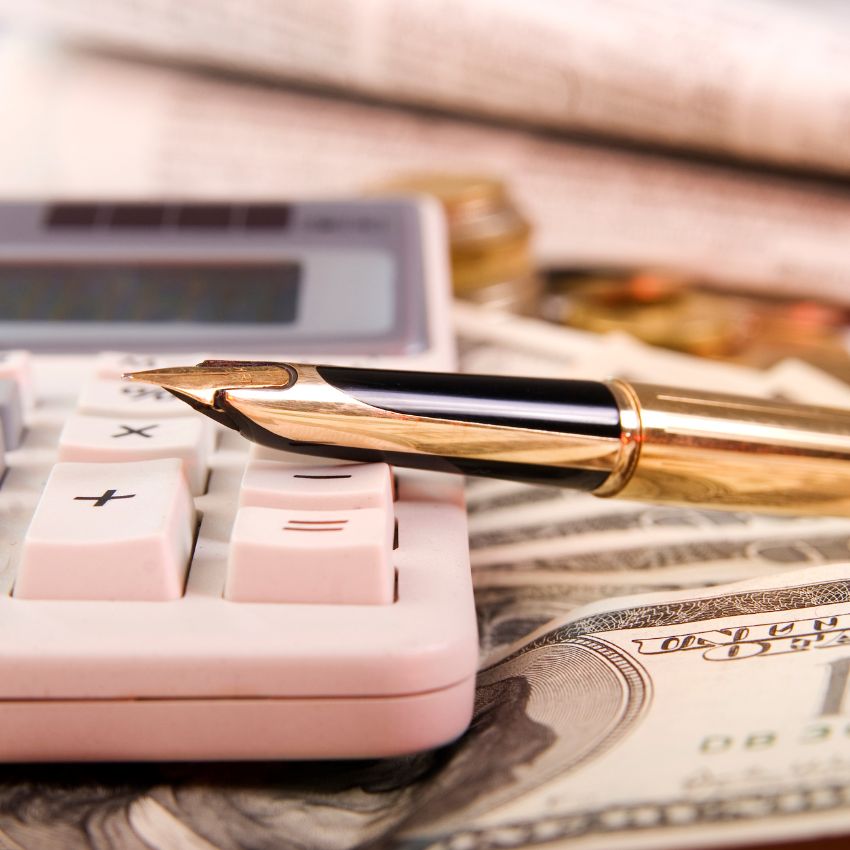
5. Staff hire
Wedding planning often begins with visions of flowing gowns, radiant flowers, and heartwarming vows. However, in the excitement of creating your dream day, one crucial element tends to be overlooked – the cost of hiring staff.
From photographers to bartenders, servers, and even day-of coordinators, staff hire can significantly impact your budget if not carefully considered.
The Hidden Costs of Staff Hire
While it’s easy to focus on the big-ticket items like venues and catering, the fees for hiring professionals to bring your wedding vision to life can accumulate quickly.
Here’s why staff hire often goes unnoticed:
Diverse Roles: A wedding requires a diverse team of professionals – photographers, videographers, musicians or DJs, waitstaff, bartenders, security, and more. Each comes with its own price tag.
Service Duration: Depending on the length and complexity of your wedding, staff may be required for an extended period. Longer hours mean higher costs.
Overtime Fees: If your event runs late or you require staff to stay beyond the initially agreed-upon hours, overtime charges can add up.
Special Requests: Any special requests, such as additional servers or unique setups, may result in added expenses.
Tipping: Don’t forget to budget for gratuities, which are customary for many service professionals.
Budgeting for Staff Hire
To avoid last-minute budget surprises and ensure you have the staff needed to make your day memorable, consider these steps:
Identify Needs: Early in your planning process, create a list of all the professionals you’ll need. This includes everyone from the photographer to the bartenders and even a wedding planner or coordinator if you choose to hire one.
Get Quotes: Reach out to potential vendors and professionals for detailed quotes. Ask about overtime fees, travel expenses, and gratuities to get a clear picture of the total cost.
Allocate a Staff Budget: Set aside a dedicated portion of your wedding budget for staff hire. This will help you prioritize your spending and avoid overspending on other aspects.
Communicate Expectations: Clearly communicate your expectations and any special requests to your hired professionals. This ensures that everyone is on the same page and helps you avoid unexpected additional costs.
Plan for Tips: Budget for gratuities in advance, as they can vary based on your location and the level of service provided.
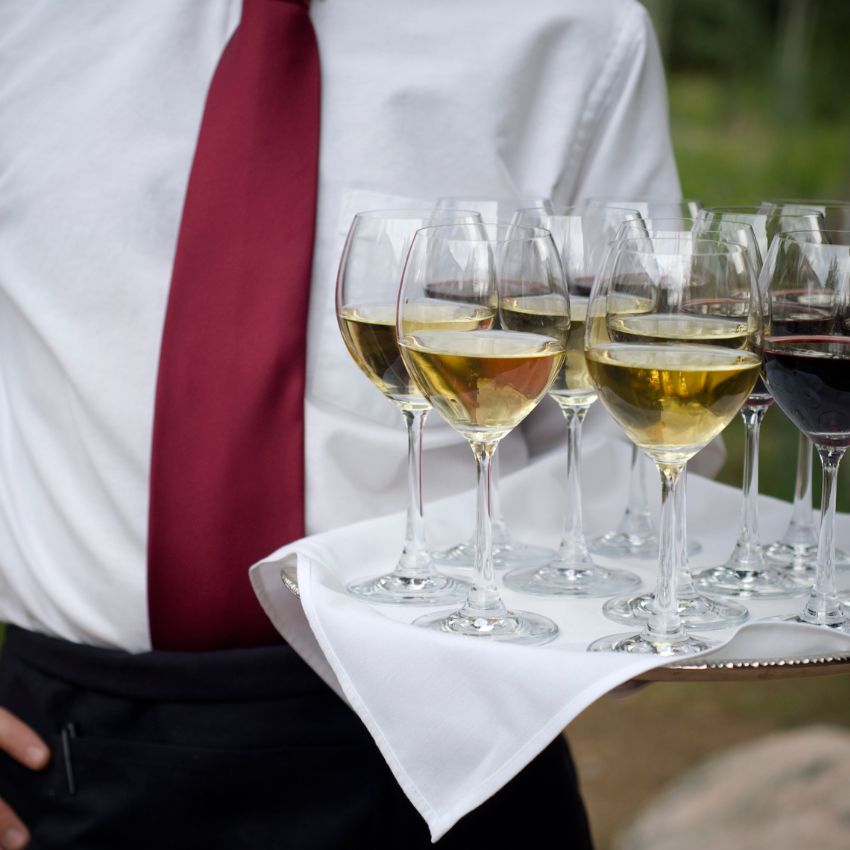
6. Cake setup fee
Wedding planning often revolves around the most enchanting and joyous aspects, like choosing the perfect venue, dress, and décor. But amidst the whirlwind of excitement, there’s one sweet yet easily overlooked expense: the cake setup fee.
The Invisible Cost of Cake Elegance
Your wedding cake is a focal point of the celebration, a delectable work of art that represents your love. However, achieving the perfect cake presentation requires more than just a beautiful design and flavor selection. There’s a behind-the-scenes cost that comes with the cake setup, and if you’re not careful, it can catch you off guard.
Why the Cake Setup Fee Matters
Several factors contribute to the often unnoticed nature of cake setup fees:
Professional Expertise: Creating and presenting a wedding cake is a skill that professional bakers and pastry chefs possess. They meticulously assemble, decorate, and transport the cake to your venue, ensuring it looks as breathtaking as you envisioned.
Complexity of Design: Elaborate cake designs, multi-tiered creations, and intricate decorations demand more time and expertise during setup. The more complex your cake, the higher the setup fee may be.
Transportation: Safely delivering a cake to your wedding venue requires careful handling and the right equipment, such as cake stands and supports. These elements are often included in the setup fee.
Timing: The setup often occurs just before your reception or dessert time, and professionals must be punctual to ensure the cake is perfect when it’s unveiled.
Budgeting for Cake Setup Fees
To ensure that cake setup fees don’t disrupt your wedding budget, consider these steps:
Inquire About Setup Fees: When you meet with your cake baker or vendor, ask about any setup fees. Don’t assume they’re included in the cake’s base price.
Understand the Details: Get a clear breakdown of what the setup fee covers. This may include transportation, equipment, and labor.
Plan Your Cake: If you have your heart set on an elaborate cake design, factor in the potential setup costs when budgeting for your wedding cake.
Read Contracts Carefully: Always carefully review contracts and agreements with your cake vendor to ensure you understand all fees and terms.
Communicate Your Vision: Clearly communicate your cake design and setup expectations with your vendor to avoid any misunderstandings.
Pro Tip: To avoid dealing with a cake setup fee altogether, consider having a self-serve cake. Instead of a traditional multi-tiered wedding cake that requires professional setup, choose a simple, single-tiered cake or cupcakes that guests can serve themselves. This not only eliminates the need for a setup fee but also adds a charming, interactive element to your dessert table. Plus, it can save you money and reduce the complexity of your wedding budget.
7. Additional lighting
When couples envision their dream wedding, they often picture soft, romantic lighting casting a magical glow over the celebration.
What’s not always in focus, however, is the cost of achieving this ambiance through additional lighting. Yet, it’s an expense that can significantly impact your wedding budget if overlooked.
The Importance of Lighting in Weddings
Lighting plays a pivotal role in setting the mood and creating a visually stunning atmosphere for your wedding. Whether it’s string lights, uplighting, chandeliers, or fairy lights, the right lighting can transform your venue and elevate your wedding decor.
Why Additional Lighting Costs Are Often Forgotten
The oversight of budgeting for additional lighting expenses can be attributed to a few key factors:
Initial Venue Appearance: When you first visit a venue, it might appear well-lit and inviting. However, to achieve the desired ambiance, additional lighting is often necessary.
Unpredictable Needs: Lighting requirements can vary depending on your venue and the time of day of your wedding. An outdoor evening reception, for instance, will require more lighting than a daytime indoor event.
Design Enhancements: As you refine your wedding decor and design, you might decide that additional lighting is essential to make your vision come to life.
Guest Comfort: Adequate lighting is not only for aesthetics but also for guest comfort and safety. It ensures that everyone can navigate the venue comfortably.
Budgeting for Additional Lighting
To ensure that the expense of additional lighting doesn’t catch you off guard, consider these steps:
Venue Walkthrough: During your venue walkthrough, discuss lighting needs with the venue coordinator. They can provide insights into what additional lighting might be required.
Lighting Specialist: Consult with a lighting specialist or decorator who can assess your venue and design plans. They can provide a more accurate estimate of the lighting needed.
Prioritize Lighting: If you have a specific vision for your wedding decor that relies on lighting, make it a budget priority from the beginning.
Get Detailed Quotes: When you receive quotes from lighting vendors, ensure they are detailed and include all necessary equipment, setup, and labor costs.
Allocate a Lighting Budget: Set aside a portion of your wedding budget specifically for lighting. This ensures you have the funds available to create your desired atmosphere.
8. Supplier gratuity
As you embark on the exciting journey of wedding planning, you’ll find yourself working with a team of dedicated professionals to bring your vision to life. While you’ll likely consider their fees in your budget, there’s one expense that often flies under the radar: supplier gratuity.
The Role of Supplier Gratuity
Gratuity, often referred to as tips or vendor tips, is a way to express your appreciation and gratitude to the various professionals who contribute to your special day. It’s a token of thanks for their hard work, attention to detail, and commitment to making your wedding a memorable experience.
Why Supplier Gratuity Can Be Forgotten
The oversight of budgeting for supplier gratuity can be attributed to several factors:
Budget Focus: Couples typically focus on the upfront costs of hiring vendors and professionals, like the venue, catering, and photography. Gratuity is an additional expense that’s often considered separately.
Variable Amounts: The amount of gratuity can vary depending on the type of service provided, the vendor’s performance, and your overall satisfaction. This variability can make it challenging to predict and budget for.
Last-Minute Consideration: Many couples only think about gratuity as the wedding day approaches, sometimes leading to financial strain if it’s not accounted for in advance.
Budgeting for Supplier Gratuity
To ensure that supplier gratuity doesn’t become an unexpected financial burden, follow these steps:
Understand Customary Rates: Research typical gratuity rates for different vendors and service professionals in your region. Rates may vary, so consult wedding planning resources or ask experienced friends for guidance.
Incorporate Gratuity in Budgeting: When you create your wedding budget, allocate a specific portion for gratuity. This ensures you have funds set aside to thank your vendors and professionals.
Prioritize Gratuity: Consider gratuity as an essential part of your overall vendor budget. Prioritize it alongside other vendor expenses to avoid scrambling for funds at the last minute.
Consult Contracts: Review your vendor contracts carefully to check if gratuity is already included. Some vendors may include a service charge, which may or may not cover tips for staff.
Plan Ahead: As your wedding day approaches, make a list of the vendors and professionals you intend to tip and calculate the amounts. This will help you prepare envelopes or allocate funds accordingly.
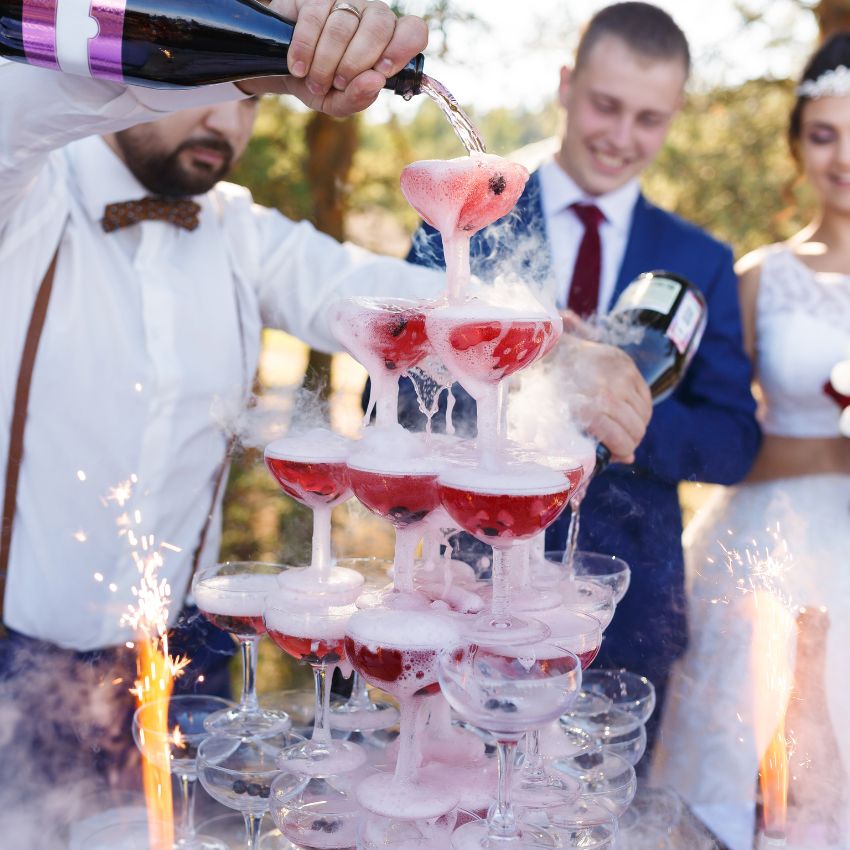
9. Bridal party food
Amidst the whirlwind of wedding planning, it’s easy to become entranced by the dazzling venue, sumptuous cuisine, and exquisite decor. Yet, there’s a vital detail that often gets overlooked when crafting your wedding budget – providing food for your bridal party.
The Forgotten Nourishment for Your Bridal Party
Your bridal party, consisting of bridesmaids, groomsmen, and sometimes even close family members, plays a crucial role in your wedding day. They offer emotional support, help with wedding preparations, and stand by your side as you exchange vows.
However, many couples forget to budget for their sustenance, and this oversight can have unintended consequences.
Why Bridal Party Food Can Slip Through the Cracks
Several factors contribute to the tendency to overlook bridal party food in the wedding budget:
Budget Priorities: Couples often allocate the majority of their budget to the venue, catering, and other visible aspects, leaving the bridal party’s nourishment as an afterthought.
Hectic Schedules: Wedding day schedules are notoriously busy, and couples may assume that bridal party members will find time to eat on their own.
Logistics: Coordinating meals for the bridal party amidst the bustling activities of the day can be challenging, causing it to slip through the cracks.
Assumed Inclusivity: Couples may expect bridal party members to join in on the main reception meal without considering pre-wedding sustenance.
Budgeting for Bridal Party Food
To ensure your bridal party is well-fed and fueled for the day’s events without compromising your budget, consider these steps:
Allocate a Portion of Your Budget: Set aside a portion of your wedding budget specifically for bridal party meals. This could include breakfast, lunch, or snacks, depending on the timing of your wedding.
Plan the Menu: Work with your caterer or venue to create a simple, cost-effective menu for the bridal party. Consider sandwiches, salads, or finger foods that are easy to grab and eat on the go.
Communicate Clearly: Let your bridal party know ahead of time what meals or snacks will be provided for them. This ensures that they aren’t left wondering and can plan accordingly.
Designate a Coordinator: Appoint a trusted friend or family member to oversee the distribution of bridal party meals and ensure everyone has a chance to eat.
Consider Timing: If your wedding day schedule is particularly tight, plan for meals during natural breaks, like while getting ready or during transportation.
10. Not using venue decor
When couples imagine their dream wedding, they often envision a beautifully decorated venue, adorned with flowers, drapes, and intricate centerpieces. However, what many don’t anticipate is the potential expense of not using the venue’s existing decor.
The Dilemma of Unused Venue Decor
Choosing not to use the venue’s decor can be a conscious decision to create a unique and personalized atmosphere for your wedding. While this allows for creativity and customization, it can also lead to unexpected expenses if you’re not careful.
Why Unused Venue Decor Costs Are Overlooked
Several factors contribute to the tendency to overlook the costs associated with not using the venue’s decor:
Budget Allocation: Couples often allocate a significant portion of their budget to external decor elements, like floral arrangements and rental decor, and may forget to factor in the potential costs of not using the existing venue decor.
Customization Goals: Many couples prioritize personalization and wish to transform the venue to align with their unique vision, even if it means disregarding existing decor elements.
Vendor Contracts: Vendors who provide decor services typically have separate contracts from the venue, which can lead to budgeting oversights.
Budgeting for Not Using Venue Decor
To ensure that not using the venue’s decor doesn’t lead to unexpected expenses, consider these steps:
Assess the Venue: Visit your chosen venue and take note of its existing decor elements, such as wall coverings, architectural features, and furnishings. Determine what you want to retain and what you plan to replace or enhance.
Include Decor Costs: Create a budget category specifically for decor expenses, both for what you plan to add and what you might need to replace or cover up.
Consult Your Decorator: If you’re working with a decor specialist, communicate your vision clearly and discuss your decision to not use certain elements provided by the venue. They can provide guidance on what’s feasible and cost-effective.
Check Contracts: Review all contracts, including those with your decorator and venue, to ensure that there are no unexpected costs or restrictions related to decor choices.
Prioritize and Compromise: If certain venue decor elements align with your vision, consider incorporating them into your design plan rather than replacing them entirely. This can save you money and streamline the decorating process.
Pro Tip: To avoid the expense and effort of not using venue decor, choose a venue with an aesthetic that aligns with your vision. Look for venues that already have the ambiance and style you desire, reducing the need for extensive decor modifications. This way, you can enhance the existing beauty of the space without the cost and hassle of a complete transformation.
11. Cake tasting
As you dive into the delightful world of wedding planning, one of the most eagerly anticipated moments is undoubtedly the cake tasting.
However, what many couples don’t anticipate is the expense associated with this delectable experience, which can easily be overlooked when crafting a wedding budget.
The Temptation of Cake Tasting
Cake tasting is not just a delightful task but a crucial one. It allows you to sample various cake flavors, fillings, and frostings to choose the perfect combination for your wedding cake. While it’s a delightful journey, the costs associated with it can sneak up on you if you’re not careful.
Why Cake Tasting Costs Are Often Overlooked
The oversight of budgeting for cake tasting can be attributed to several factors:
Initial Excitement: When couples embark on wedding planning, the initial excitement often centers on big-ticket items like venues, catering, and attire. Cake tasting is not typically top of mind during this phase.
Perceived as Free: Many couples assume that cake tasting is a complimentary service offered by bakeries. While some may offer a free initial tasting, it often comes with limitations, and additional tastings or customization can incur fees.
Inevitability: Cake tasting is a fun and necessary part of the wedding cake selection process, so it’s sometimes overlooked as a separate budget item.
Budgeting for Cake Tasting
To ensure that cake tasting doesn’t lead to unexpected expenses in your wedding budget, consider these steps:
Research Bakeries: Before scheduling cake tastings, research local bakeries and their policies regarding tastings. Some may offer complimentary sessions, while others may charge a fee.
Clarify Terms: When you schedule a cake tasting appointment, clarify whether there are any associated costs. Ask about the number of flavors and combinations you can sample.
Set a Tasting Budget: Allocate a specific budget for cake tasting in your overall wedding budget. This allows you to enjoy the experience without overspending.
Prioritize Selections: During the tasting, prioritize the flavors and combinations you genuinely want for your wedding cake. This can help you avoid additional charges for excessive tastings.
Ask About Credits: Some bakeries may offer to credit the tasting fee toward your wedding cake order if you choose to book with them. Inquire about this possibility.
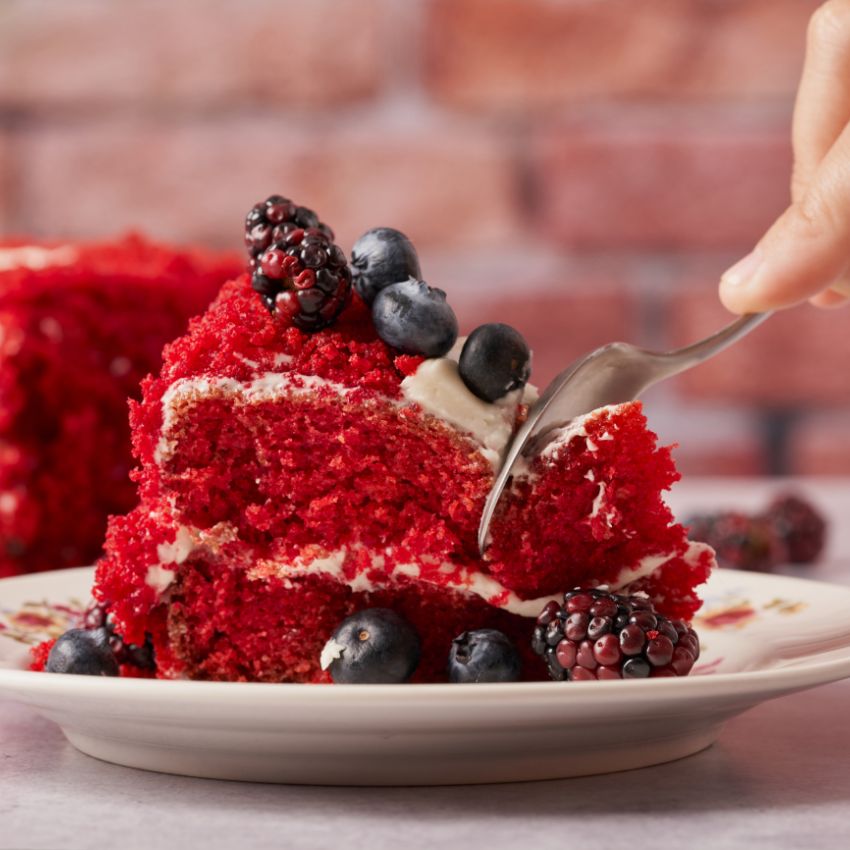
12. Menu tasting
In the exciting whirlwind of wedding planning, many couples look forward to the culinary delights that await them on their special day. Yet, one often underestimated expense that can catch couples off guard is the cost of menu tasting.
The Pleasures of Menu Tasting
Menu tasting is a deliciously anticipated part of wedding planning. It allows couples to sample various dishes, fine-tune their menu choices, and ensure that the culinary aspect of their wedding is nothing short of exceptional. However, the expenses associated with this indulgence can be overlooked during the budgeting process.
Why Menu Tasting Costs Are Easily Forgotten
The oversight of budgeting for menu tasting can be attributed to several factors:
Initial Priorities: When couples begin their wedding planning journey, the initial focus tends to be on prominent expenses like venue, catering, and attire. Menu tasting is often considered later in the process.
Perceived as Complimentary: Some couples assume that menu tasting is a complimentary service offered by catering companies. While some may offer a basic tasting, extensive or customized tastings may come with fees.
Budget Flexibility: Couples may have a rough idea of their overall catering budget but underestimate the costs associated with personalized menu tastings.
Budgeting for Menu Tasting
To ensure that menu tasting doesn’t lead to unexpected expenses in your wedding budget, consider these steps:
Research Caterers: Before scheduling menu tastings, research potential catering companies and inquire about their menu tasting policies. Be clear about any associated costs.
Allocate a Tasting Budget: Set aside a specific portion of your catering budget for menu tasting. This allows you to enjoy the experience without overspending.
Prioritize Tasting Choices: During the tasting, focus on sampling dishes that you’re genuinely considering for your wedding menu. This helps you avoid additional charges for excessive tastings.
Ask About Credits: Some caterers may offer to credit the tasting fee toward your catering contract if you choose to book with them. Inquire about this possibility.
Be Clear About Inclusions: Discuss with your chosen caterer what is included in the tasting fee. This ensures transparency and helps you understand what to expect.
Pro Tip: To avoid the expense and hassle of separate menu tastings, consider choosing a catering company or venue that offers inclusive wedding packages. These packages often include menu options that have been tried and tested, eliminating the need for extensive tastings. This can streamline your planning process and save you money while still ensuring a delicious dining experience for your guests.
13. Hair and makeup trials
When envisioning their wedding day, couples often picture themselves looking their absolute best, with flawless hair and makeup. However, amidst the excitement of planning, one expense that can be easily forgotten is the cost of hair and makeup trials.
The Importance of Hair and Makeup Trials
Hair and makeup trials are essential pre-wedding appointments where brides and sometimes grooms can work with their chosen hairstylist and makeup artist to perfect their look for the big day. These trials allow for testing different styles, makeup palettes, and ensuring everything is just right for the wedding.
Why Hair and Makeup Trials Costs Are Often Overlooked
The oversight of budgeting for hair and makeup trials can be attributed to several factors:
Initial Priorities: Early in the wedding planning process, couples often prioritize major expenses like venues, catering, and attire. Hair and makeup trials might not be considered until later stages.
Assumed Inclusivity: Some couples assume that the cost of hair and makeup trials is included in the fees paid to the hairstylist or makeup artist for the wedding day. However, trials are typically a separate service.
Misunderstood Necessity: Some couples may underestimate the importance of hair and makeup trials and may view them as optional rather than essential.
Budgeting for Hair and Makeup Trials
To ensure that hair and makeup trials don’t lead to unexpected expenses in your wedding budget, consider these steps:
Research Costs: Prior to booking hair and makeup professionals, inquire about the cost of trials. Ensure that you understand any additional fees for multiple trials or changes.
Allocate a Trial Budget: Set aside a specific portion of your beauty budget for hair and makeup trials. This allows you to perfect your wedding day look without overspending.
Schedule Trials Early: Plan hair and makeup trials well in advance of your wedding date, so you have time for adjustments and multiple trials if necessary.
Communicate Clearly: Discuss your expectations and desired looks with your hairstylist and makeup artist during the trial. Clear communication helps ensure that you achieve the perfect look.
Plan for Multiple Trials: If you’re unsure about your desired look or want to experiment with different styles, budget for the possibility of multiple trials.
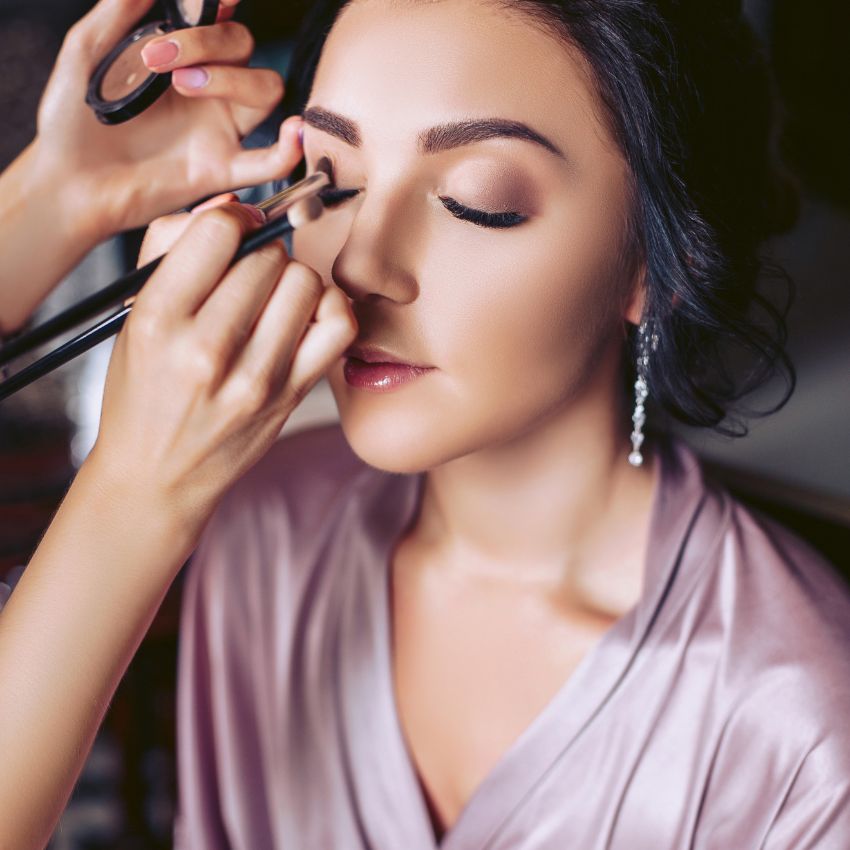
14. Out of season items
When couples embark on the exciting journey of wedding planning, they often have a vision of their dream day. However, one sneaky expense that can catch them off guard is the cost of out-of-season items.
The Appeal of Seasonal Choices
Choosing seasonal items for your wedding, such as flowers, decor, and even certain foods, can be an eco-friendly and budget-conscious decision. Seasonal choices often align with the natural beauty of the time of year and can enhance the overall theme of your wedding.
Why Out-of-Season Costs Are Overlooked
The oversight of budgeting for out-of-season items can be attributed to several factors:
Initial Focus: Couples often begin their wedding planning journey by focusing on major expenses like venues, catering, and attire. Seasonal considerations may come later in the planning process.
Assumed Availability: Some couples assume that all items will be readily available throughout the year. However, out-of-season items may need to be specially sourced or imported, leading to higher costs.
Budget Flexibility: Couples may set a budget without considering the potential impact of choosing out-of-season items, leading to unexpected expenses.
Budgeting for Out-of-Season Items
To ensure that out-of-season items don’t disrupt your wedding budget, consider these steps:
Research Seasonal Availability: Before making decisions about wedding details, research the availability of items based on your wedding date. Determine which elements are in or out of season.
Budget for Seasonal Adjustments: If you have your heart set on out-of-season items, allocate a portion of your budget for this specific purpose. This ensures that you have the funds to cover potential extra costs.
Consult Vendors: Discuss your preferences with vendors and professionals. They can provide guidance on the availability and cost implications of out-of-season items.
Consider Alternatives: If the cost of out-of-season items proves prohibitive, explore alternative options that align with the season and theme of your wedding.
Plan Ahead: Early planning allows you to make informed decisions and potentially find cost-effective sources for out-of-season items.
15. Dress alterations
As you step into the world of wedding planning, finding the perfect wedding dress is a thrilling endeavor. However, amidst the excitement, one crucial expense that often escapes initial budgeting considerations is the cost of dress alterations.
The Significance of Dress Alterations
Dress alterations are a vital part of ensuring your wedding gown fits flawlessly, complements your body shape, and makes you feel like the radiant bride you are. These alterations may include adjustments to the hem, waist, bust, straps, and more, depending on the dress style and your preferences.
Why Dress Alterations Costs Are Overlooked
The oversight of budgeting for dress alterations can be attributed to several factors:
Initial Dress Cost: Couples often focus on the initial purchase price of the wedding dress and may not anticipate the additional cost of tailoring.
Assumed Inclusivity: Some assume that dress alterations are included in the purchase price of the dress, but they are typically a separate service.
Underestimating Alterations: Couples may underestimate the extent of alterations needed to achieve the perfect fit and style, leading to budget surprises.
Budgeting for Dress Alterations
To ensure that dress alterations don’t lead to unexpected expenses in your wedding budget, consider these steps:
Consult a Seamstress Early: After purchasing your wedding dress, schedule a consultation with a skilled seamstress or tailor. Discuss your vision for alterations and get a preliminary estimate.
Allocate a Tailoring Budget: Set aside a specific portion of your wedding attire budget for dress alterations. This ensures you have funds dedicated to achieving the perfect fit.
Prioritize Alterations: During your consultation, prioritize alterations based on your preferences and the fit of the dress. This helps you make informed choices within your budget.
Plan for Multiple Fittings: Understand that multiple fittings may be necessary to achieve the desired fit, and budget for any additional costs associated with these appointments.
Communicate Clearly: Clearly communicate your vision and expectations with your seamstress. Being upfront about your preferences helps avoid misunderstandings and additional costs.

by Tanya Guilfoyle
Born in Johannesburg, South Africa, Tanya has been an active contributor and planner in the wedding industry since 2016. When not writing useful content for brides and wedding professionals, she can be found designing templates for her Etsy shop, TWCprintables.


